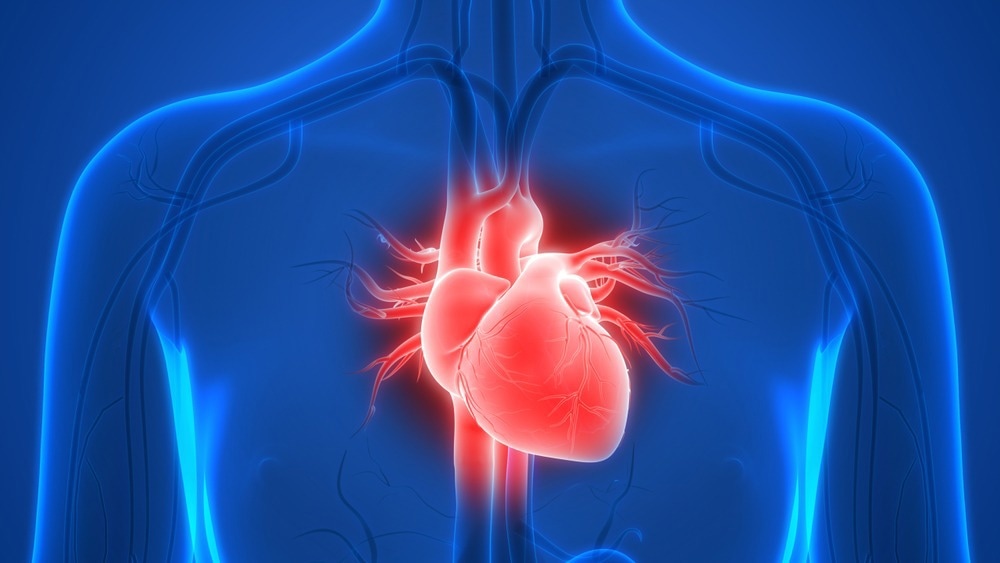In a recent study published in Nature Cardiovascular Research, researchers modeled the right ventricle (RV) to create a robot replicating right ventricular hemodynamics and biomechanics.
 Study: Robotic right ventricle is a biohybrid platform that simulates right ventricular function in (patho)physiological conditions and intervention. Image Credit: Magic mine/Shutterstock.com
Study: Robotic right ventricle is a biohybrid platform that simulates right ventricular function in (patho)physiological conditions and intervention. Image Credit: Magic mine/Shutterstock.com
Background
RV dysfunction is a cardiovascular concern, prompting the development of RV-specific therapies and technologies. Pressure overload, volume overload, and systolic failure can all cause RV dysfunction. However, regulatory standards for right ventricle-focused gadgets necessitate extensive testing, and animal research is prohibitively expensive, variable, and time-consuming.
In vitro simulators are less concentrated than benchtop simulators concerning regulated hemodynamics. Patients with congenital cardiac disease and pulmonary hypertension are especially vulnerable to RV. RV-focused mechanical devices used for animal trials are time-consuming, costly, and frequently lethal.
About the study
In the present study, researchers developed a robotic RV (RRV) to replicate RV function under pathophysiological settings and intervention to reduce animal testing for assessing intracardiac device hemodynamic performance by reproducing RV pathophysiology on a laboratory bench.
The researchers used a biohybrid technique to create an RV simulator, integrating a chemically treated endocardial scaffold with a soft robotic synthetic myocardium. The RRV acts as the primary cardiac pump, reproducing the matching hemodynamics and removing the requirement for external pulsatile pumps.
The team used a control system to pressurize the actuators with a sequential delay of 20 to 50 m/s to replicate peristaltic-like RV ejection. Trabeculae, valves, papillary musculature, and moderator bands are among the complicated three-dimensional endocardial components of the right ventricle. Pig hearts were stored in formalin and treated with surfactant molecules to restore natural tissue-like characteristics to attain anatomical correctness.
The researchers replaced the thick myocardium with synthetic elastomeric myocardial tissues and McKibben robotic and soft actuators biomimetically associated with the cardiac musculature, simulating the contractile functions of native myocardial tissues to attain physiologically precise RV motion. The actuators could produce an axial contraction of 25% and a radial expansion of 117%, allowing for physiologically meaningful volume displacement. The team used computed tomography (CT) to offer a three-dimensional image of RRV anatomy and architecture.
The researchers devised a computational framework to optimize the mobility and function of the soft robotic myocardium. Magnetic resonance imaging (MRI) phase-contrast two-dimensional flow data were used with two-way fluid-structure interaction models to assess the global behavior of the soft robotic myocardium. The researchers recreated RV diseases in the laboratory by deactivating specific actuators, altering input pressure, and modifying circulatory system parameters. They observed a decrease in reverse flow compared to the pathological TV, indicating a possible improvement in the biomimetic soft robotic myocardial tissues.
Results
The RRV is a ground-breaking technology that can mimic real-time hemodynamic changes in healthy and pathological circumstances, such as volume overload, RV systolic failure, and pressure overload. This method has been proven in vivo using a pig model, revealing its promise for in vitro tricuspid valve repair and replacement. The computational design improved the biomechanics and hemodynamics of the RRV, confirmed in a porcine study.
On the bench, the researchers successfully duplicated RV flow, volumes, and pressures and compared functional characteristics to in vivo pig data. They also replicated several types of RV dysfunction, such as pulmonary arterial hypertension (PAH), tricuspid valve regurgitation (TR), and myocardial infarction, in the RV wall. The RRV precisely recreated papillary muscle contractile action and adjustable chord tension in healthy and pathological states.
RV contraction differs from that of its left counterpart, having four mechanisms: inward movement of the right ventricular free wall, septal bulge into the right ventricle, longitudinal TV annular contraction toward the apical region, and circumferential RV outflow tract (RVOT) contractions. The robotic and soft myocardial tissues mimic the cardiac muscular fiber orientation, and so do its actuators. The RRV platform was a cardiac replacement replicating RV septal and free wall movement, allowing for good echocardiography, ultrasonography, CT, and MRI images.
The soft and robotic myocardial tissues contract, moving fluid forward and producing pressure differentials across the TV and PV, resulting in synchronized opening and shutting. The RRV performed well concerning hemodynamics, with peak systolic blood pressure in the right ventricle observed at 32 mm of Hg and RV volume reduction of 62%. The bioinspired architecture of the platform enabled RV wall movement modeling, with healthy values surpassing 38% in pigs and 42% in humans. In a laboratory context, the capacity to duplicate and alter chordae tension using a contractile soft robotic muscle in RRV could simulate papillary muscle failure.
Based on the study findings, the RRV simulator is a biohybrid robotic right heart cardiac simulator used to research and treat RV pathology. It recreates cardiovascular biomechanics using a myocardial replacement, concentrating on the effects of changes in RV shape, function, and stress on hemodynamics and clinical indicators. The simulator is compatible with echocardiography, CT, and MRI to investigate anatomy and function. Future research might focus on replicating the left heart.